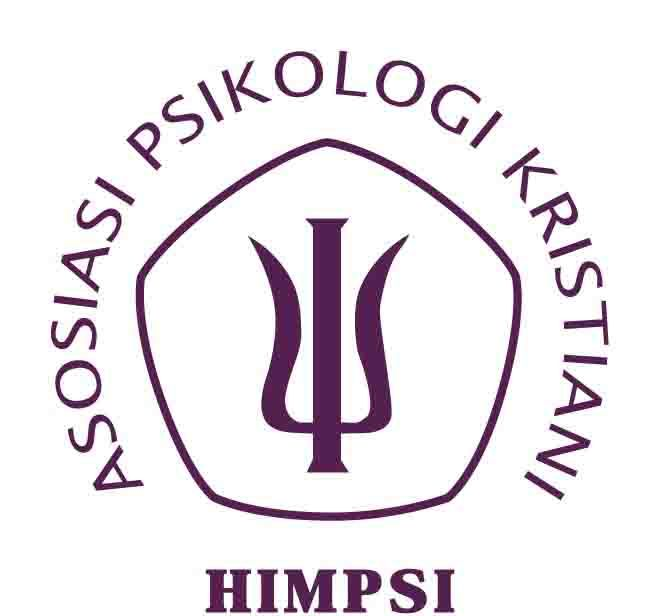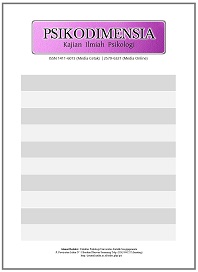Case Research of Personology of Filipino Children in Conflict with the Law (CICL)
Abstract
Keywords
Full Text:
PDFReferences
Armbruste, B. B., Lehr, F., & Osborn, J. (2006). A child becomes a reader - proven ideas from research for parents. RMC Research Corp.
Atinaja, Ma. Regina (2002). A Cognitive-Behavioral Modification Therapy for Pupils with Disruptive Behavior: An Experimental Study. MA Psychology, University of Sto. Tomas, Manila.
Avila, B. (2011, September 27). Children in Conflict with the Law. Lowering the Age of Crime, p. 2.
Bala, A. R. (2011, April 30). Community-based options in handling children at-risk and children in conflict with the law. Manila, Philippines.
Baumeister, R.F. (2001). "Violent Pride." Scientific American 384(4):96–101.
Bell, G. (2008, September 2). www.k4health.org. Retrieved March 30, 2016, from https://www.k4health.org/sites/default/files/migrated_toolkit_files/0470181095-1.pdf
Bernichon, T., Cook, K., & Brown J. (2003). Seeking Self-Evaluative Feedback: The Interactive Role of Global Self-Esteem and Specific Self-Views. Journal of Personality and Social Psychology, 84 (1), 194-204.
Berones, E. (2011, February 9). Ezineaticles.com. Retrieved 2014, from http://www.allthingsif.org/archives: http://Ezinearticles.com:http://www.allthingsif.org/archives
Bhattacherjee, A. (2012). Social Science Research: Principles, Methods, and Practices. South Florida.
Broderick, C., and Pilliam-Krager, H. (1993, 2000 eds.). Understanding Family Process. Newbury Park, CA: Sage.
Burr, W. R., and Christensen, C. (1992). "Undesirable Side Effects of Enhancing Self-Esteem." Family Relations 41:460–464.
Christensen, M.J.; Brayden, R. M.; Dietrich, M.S.; Mclaghlin, F. J.; Sherrod, K. B.; and Altemeier, W. A. (1994).
Davidson, R., Putnam, K., & Larson, C. (2000). Dysfunction in the Neural Circuitry of Emotion Regulation-A Possible Prelude to Violence. SCIENCE, Vol.289, July 28, 591-594
.De Lima, L. (2011). On the .Occasion of the Media Forum JJWC: An Engagement with the Media:" Understanding the Children in Conflict with the Law."Sulo Riviera Hotel (formerly Sulo Hotel) Matalino Road, Diliman, Quezon City, October 14,2011.
Debus, M. Methodological Review: A Handbook for Excellence in Focus Group Research. (1995, 1st Ed.) Washington, DC: Academy for Educational Development.
Detrick, S., et.al. (2008). Violence against Children in Conflict with the Law: A Study on Indicators and Data Collection in Belgium, England and Wales, France and the Netherlands.
DeVito, J., (2005). Messages: Building Interpersonal Communication Skills, 6th edition, Pearson Education, Inc.
EBSCO Industries, Inc. (2016). www.dlsud.edu.ph/library. Retrieved January 29, 2016, from www.ebsco.com: http://eds.b.ebscohost.com/eds/results?sid=1a479832-4ed9-43fb-ab2e-f9eecd445fef%40sessionmgr115&vid=7&hid=103&bquery=(Philippine+AND+Researches+AND+%22in%22+AND+Criminology+AND+Students%27+AND+Attitude+AND+toward+AND+Crime)&bdata=JmNsaTA9RFQxJmNsdjA9MjAwN
EBSCO Industries. (2016). www.dlsud.edu.ph/library. Retrieved January 29, 2016, from www.ebsco.com: http://eds.b.ebscohost.com/eds/results?sid=1a479832-4ed9-43fb-ab2e-f9eecd445fef%40sessionmgr115&vid=5&hid=103&bquery=(Local+AND+Researches+AND+%22in%22+AND+Criminology)&bdata=JmNsaTA9RFQxJmNsdjA9MjAwNTAxLTIwMTUxMiZjbGkxPUZUJmNsdjE9WSZjbGkyPVJWJmNsdjI9WSZ0
EBSCO Industries. (2016). www.dlsud.edu.ph/library. Retrieved January 29, 2016, from www.ebsco.com: http://eds.b.ebscohost.com/eds/results?sid=1a479832-4ed9-43fb-ab2e-f9eecd445fef%40sessionmgr115&vid=3&hid=103&bquery=Criminology+Students&bdata=JnR5cGU9MCZzaXRlPWVkcy1saXZl
Encyclopædia Britannica, Inc. (2007, March 16). Introspection: Philosopy and Psychology. Retrieved from Encyclopædia Britannica: https://www.britannica.com/topic/introspection
Ezinearticles.com. (2012). Ezinearticles.com. Retrieved 2014, from http://Ezinearticles.com: http://www.allthingsif.org/archives
Flynn, Kohler (2003). Self Esteem Theory and Measurement volume three issue one –November, ISSN 1499-8513 (Self Esteem Theory and Measurement: A Critical Review).
Gardiner, H., Komitzki, C. (2002). Lives Across Cultures: Cross-Cultural Human Development. Boston: Allyn and Bacon.
Gecas, V. (2001). "The Self as a Social Force." in Extending Self-esteem Theory and Research, ed.. Cambridge, UK: Cambridge University Press.
Goldenberg, I., and Goldenberg, H. (2000). Family Therapy: An Overview: Belmont, CA: Brooks/Cole.
Harter, Susan. (1999). Self-Perception Profile for Children: Manual. Denver, CO: University of Denver Press.
Hewlett, B. (2007). Accessing the parental mind through the heart: A case study in child-inclusive mediation). Journal of Family Studies v.13 no.1 May - Jun 2007: 94-103.
Hutt, W. (2009). Self-concept and Self-esteem. Educational Psychology Interactive. Valdosta, GA: Valdosta State University.
International Encyclopedia of Marriage and Family (2003)
International Encyclopedia of the Social Sciences (2008)
Johnson, B. (2001, March). Toward a New Classification of Nonexperimental Quantitative Research. Educational Researcher (pp. Vol. 30. No. 2, pp. 3–13). Educational Researcher. Retrieved March 29, 2016, from http://www33.homepage.villanova.edu/edward.fierros/pdf/Johnson.pdf
Johnston, J. (2006). A Child-Centered approach to High-conflict and Domestic-violence families: Differential Assessment and Interventions. Journal of Family Studies v.12 no.1 May 2006: 15-35.
Khronos Group. (2017). Khronos Open GLES. Retrieved from www.khronos.org: https://www.khronos.org/opengles/
Lenhard, A., & Lenhard, W. (2017). Psychometrica. Retrieved from www.psychometrica.de: https://www.psychometrica.de/effect_size.html
McIntosh, J., et.al. (2007). Child-focused and Child-inclusive Family Law Dispute Resolution: One-year Findings from a Prospective Study of Outcomes. Journal of Family Studies v.13 no.1 May - Jun 2007: 8-25.
Meffre, E. (2005). International Dictionary of Psychoanalysis. Philippines
Miller, D.C. American Psychological Association (5th Edition). Washington. 2001.
Moloney, Lawrie (2006). Child-sensitive Practices in High-conflict Parenting Disputes: A 30-year Road to Serious Reform.
Journal of Family Studies v.12 no.1 May 2006: 37-56.
Morine, Nicholas (2009). Sociology – Cooley's "The Looking Glass Self"-Symbolic Interactionism, Sociological Theory, Charles Cooley.
Oppenheimer, Agnès. (1998). Heinz Kohut. Paris: Presses Universitaires de France.
Personology Research & Development Center, Inc.[PRDC] (2001)
Purkey, W. (1988). An Overview of Self-Concept Theory for Counselors. ERIC Clearinghouse on Counseling and Personnel Services, Ann Arbor, Mich. (An ERIC/CAPS Digest: ED304630)
Sanchez, Aldwin Raymond (1993). Self-concept, Self-esteem, Values and Behavior of Intermediate Pupils at the General Gregorio Del Pilar Elementary School in Bulacan Before and After Intervention Procedures. University of Sto.Tomas, Manila.
Stevens, M. J., & Morris, S. J. (1995). Counselor Education & Supervision. Retrieved 2012, from Writing@CSU: http://www.Writing@CSU
Stevens, M. J., & Morris, S. J. (1995-2011). A format for case conceptualization. Counselor Education & Supervision (pp. Vol.35, Issue 1, p.16). Colorado: Colorado State University.
Tan, Crestita B. Research Process (2007). Manila, Philippines
Tan, M., (2007). The Effects of Family Cohesion and Personality on the Mental Health of Young Australians. HILDA Survey Research Conference (3rd: 2007: Melbourne, Vic) 15p.
Templa, M. F. (2004). Breaking Rules: Chiuldren in conflict with the law and the juvenile process, the experiences in the Philippines. Save the Children - UK , 118.
Templa, M.A, Pacaba, M.T., Sarabia, D. G., Montebon, M., Balofinos, A., Tutor, E., Mella, C. F., & Tornio, S. (2004). Understanding children in conflict with the law: Contradictions in victimization, survivor behaviour, and the Philippine justice system, a study of the situation of children in conflict with the law in Davao. Save the Children-UK.
University of Minnesota Libraries Publishing. (2016). Research Methods in Psychology. Minnesota (http://creativecommons.org/licenses/by-nc-sa/4.0/).
Webb, N. (2007). Building Connections Pilot Program: Evaluation Report. Baulkham Hills, NSW: Interrelate Family Centers, 2007, 78p
White, J., and Klein, D. (2002). Family Theories (2nd.ed.). Thousand Oaks, CA: Sage.
Willig, C. (2008). Introducing Qualitative Research in Psychology. New York, NY 10121–2289, USA: Open University Press, McGraw-Hill Education.
Willig, C. (2013). Open University Press. Retrieved from www.openup.co.uk: https://www.mheducation.co.uk/introducing-qualitative-research-in-psychology-9780335244492-emea-group
DOI: https://doi.org/10.24167/psidim.v19i1.2546
Print ISSN : 1411-6073 | online ISSN : 2579-6321 View My Stats

This work is licensed under a Creative Commons Attribution 4.0 International License.





















